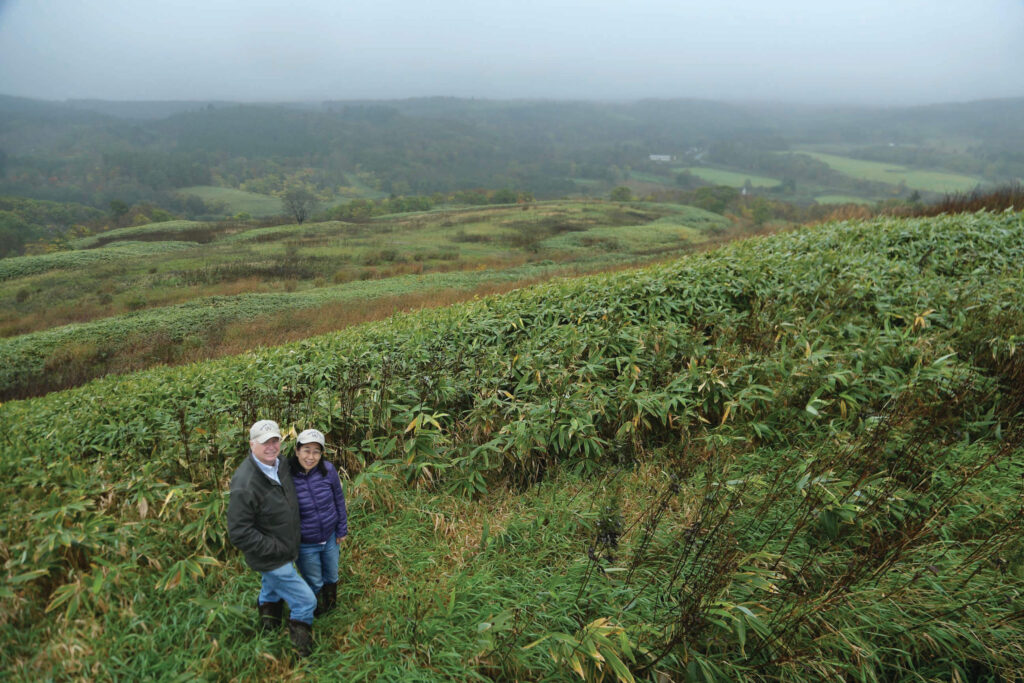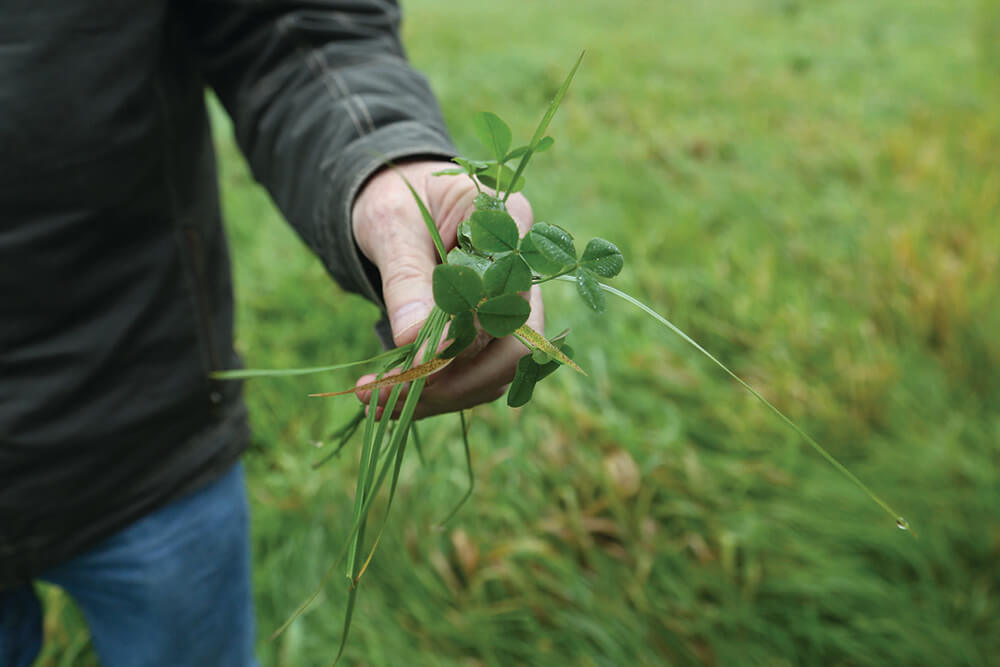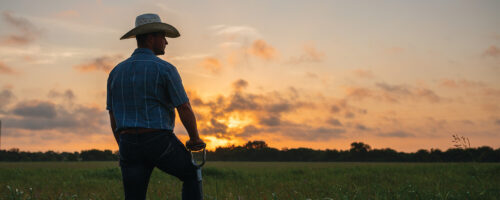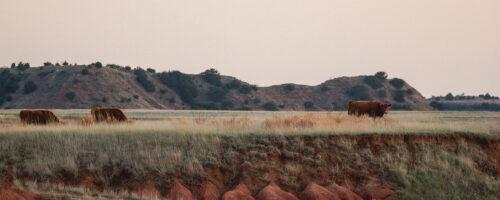Learning to Grow Pastures and Profit
Tim Jones and Chie Morizuka give back to Noble Research Institute after finding success with regenerative ranching.
Retired educators and cattle producers Tim Jones and Chie Morizuka’s passions lie at the intersection of learning and land stewardship. While Jones hails from a tiny Texas town, Morizuka was born in one of the world’s largest metropolitan areas: Tokyo. Yet both recognize the value of regenerative agriculture.

Deep Roots
When Jones and Morizuka stepped to the helm of Gladney Ranch in Love County, Oklahoma, in 2010, they looked to Noble Research Institute to guide them toward profitability and proper management on their beef cattle operation.
However, the Jones family had already built a decades-long relationship with the research organization — since 1982, when W.A. “Pete” Jones, Tim’s father, first reached out for guidance. Pete, a humble oil field worker, had taken on management of the Gladney Ranch at the request of Newcomb Gladney-Seitz, his employer and the ranch founder’s daughter. Pete was gifted the ranch following her death five years later.
“During the 36 years that my family operated then owned Gladney Ranch, rarely was any decision made without first consulting the experts at Noble Research Institute,” Jones says. “There was a reason for that. Noble consultants could always be counted on to give the best research-based, unbiased advice. And, it was always free of charge.”
The Gladney Ranch shares even deeper roots with Noble. Decades before Pete Jones cared for the Gladney Ranch cattle, the southern Oklahoma operation relied on the latest industry knowledge from Noble Research Institute. Its founder, J.W. Gladney, reached out to the organization as early as 1949, seeking advice on soil testing, planting, terracing and building organic matter in his soil.

A Regenerative Approach
When Jones and Morizuka retired to the ranch, the couple attended most of Noble’s educational events and started learning new ways to manage the ranch.
Noble staff helped them select superior cattle genetics. They tailored a breeding program to emphasize calving ease, stayability and docility in their Angus-based cow herd matched with curve-bending, high-growth Charolais bulls. The resulting smoke-colored calves thrived beside their mothers grazing on native grasses.
However, it wasn’t more pounds, more calves or more inputs that proved most advantageous to the ranch’s bottom line. It was soil health attained through regenerative ranching practices. Following consultation with Noble, the couple was able to reduce their 300-head herd by half in order to adjust to climate variability while increasing profitability. They did it by managing their grazing lands in a way that required no additional inputs.
“The focus changed from raising beef to raising grass with an emphasis on soil health,” Morizuka says.
As former monoculture pastures sprung to life with native grasses, fauna and pollinators, the ranch’s profitability increased. The couple took long walks each day to check their cattle, and Morizuka remembers realizing her love for caring for livestock and the land as she strolled through the ranch’s native grasslands, now rich with clover, bluestem and wildflowers, such as Indian paintbrush.

The Next Chapter
In 2018, the family made the difficult decision to sell the ranch, and Jones and Morizuka relocated to Japan to be closer to Morizuka’s family. Yet, even more than 6,000 miles from the grazing lands of Thackerville, Oklahoma, the couple sees the value of stewardship and regenerative agriculture. They have recently completed Japan’s farmer certification process and are taking steps toward raising beef cattle again. They plan to use many of the same principles and practices they learned in middle America on their Hokkaido island home to focus on regenerative agriculture and sell organic, sustainably raised beef.
Today, the couple still pores over Noble’s publications, resources and research to learn about new and better ways to manage grazing livestock to improve the land’s health and usability for decades to come. They say they happily support Noble Research Institute, adding that the organization has given them and their family so much.
“As a way of saying ‘thank you’ to Noble Research Institute for all the support it has given and continues to give, and to help in a small way to fund and support ongoing and future research, we want to donate what we can, when we can,” says Jones. He and Morizuka are now regular financial donors to Noble.
For Noble’s part, the Institute uses their contributions to develop research, consultation and education programs that help farmers and ranchers find new ways to regenerate their grazing lands and achieve lasting financial stability. Regenerative ranching is the process of restoring degraded soils by using practices based on ecological principles, which means working within the natural environment — comprising soil, plants, water, animals and the humans that manage them — to build organic matter and resilience within the soil.
“Regenerative ranching is a solution for some of the greatest challenges facing both livestock producers and society at large,” says Shannon Steele, development officer for annual giving and donor stewardship. “It is satisfying to see people like the Jones-Morizuka family find such success in regenerating their grazing lands and now be in a position where they are excited to give back. It’s thanks to people like them that we will be able to come alongside even more farmers and ranchers on their journeys to restore degraded soils and manage the land in ways that are both profitable and good for us all.”
Photos by Ken Shimizu



Comment